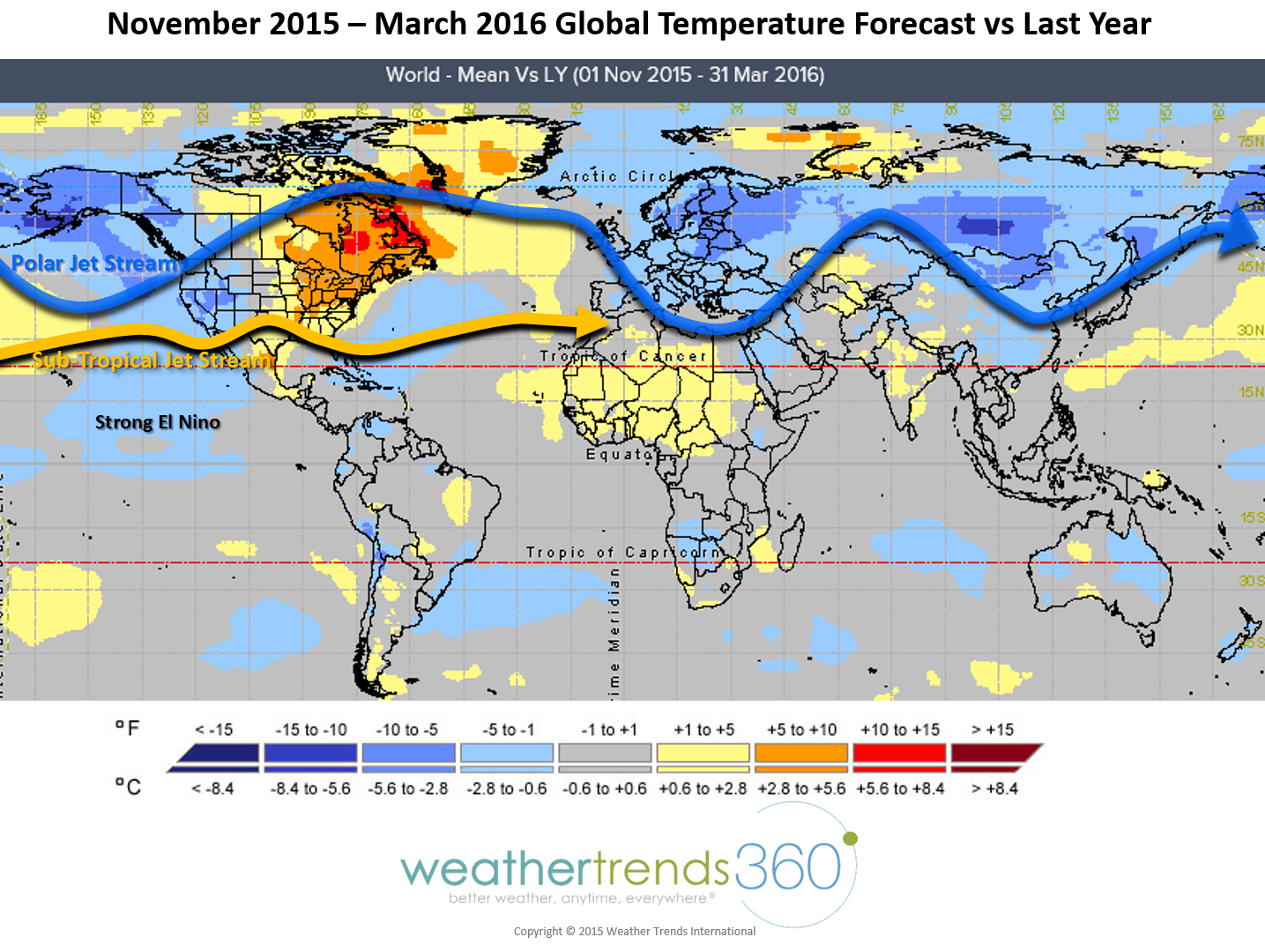
According to Accuweather, the coastal mountains of western British Columbia, including Whistler Blackcomb Ski Resort, are expected to see an increase in snowfall this winter. Mild pacific air is expected to be pushed to the region by El Niño and is predicted to result in above average temperatures for the majority of western Canada. Accuweather stated that; “farther east in the Rockies of eastern British Columbia and western Alberta, snowfall will underachieve this winter. The majority of the snow in this region will fall during the first half of the winter before a drier pattern sets up during January and February.”

The prairie region of Canada is expected to experience a winter with a lack of moisture and moderate temperatures due to the polar Jetstream making its way farther north. This polar Jetstream track is expected to limit the amount of artic cold air masses that impact the area and is expected to shorten the duration of the few that do. According to Accuweather; “Average temperatures could be as much as 3 degrees Celsius (5.5 degrees Fahrenheit) above normal this winter in cities such as Edmonton, Calgary and Regina.” This region of Canada is expected to experience scare significant snowfall events due to the main storm system track impacting the south and central United States.

El Niño is expected to bring moderate temperatures in comparison to last year to the majority of Canada throughout the winter. This will increase the likelihood of ice storms impacting eastern Ontario to southern Quebec. The main storm track is expected to shift south and east in January and February leading to the majority of Ontario, including lake-effect snowfall to have a decrease in intensity. While this shift is expected to decrease significant snowfall the majority of Ontario, eastern Quebec on the other hand is expected to experience a heightened risk of significant snowfall events during January and February.

Canada is surrounded by seas that are expected to experience above average surface temperatures. According to the NOAA Climate Prediction Center; “the ongoing El Niño event is expected to peak in strength in late autumn or early winter with season average surface temperature (SST) anomalies in the Niño 3.4 region near or exceeding +2.0 degrees Celsius, diminishing in magnitude through the late winter and spring.” Although above-average temperatures are expected to impact the region, it doesn’t exclude the possibility of a snowy winter. The area from New Brunswick to Prince Edward Island is expected to experience snowfall, while Newfoundland is expected to experience a moderate temperatures with a decreased likelihood of significant snowfall events.
Lack of Sustained Cold in Northern Manitoba?!? That’s a good laugh. Coldest area outside the arctic. What do they expect – it’ll only be 20-40 below for 7 months instead of 30-50 below?